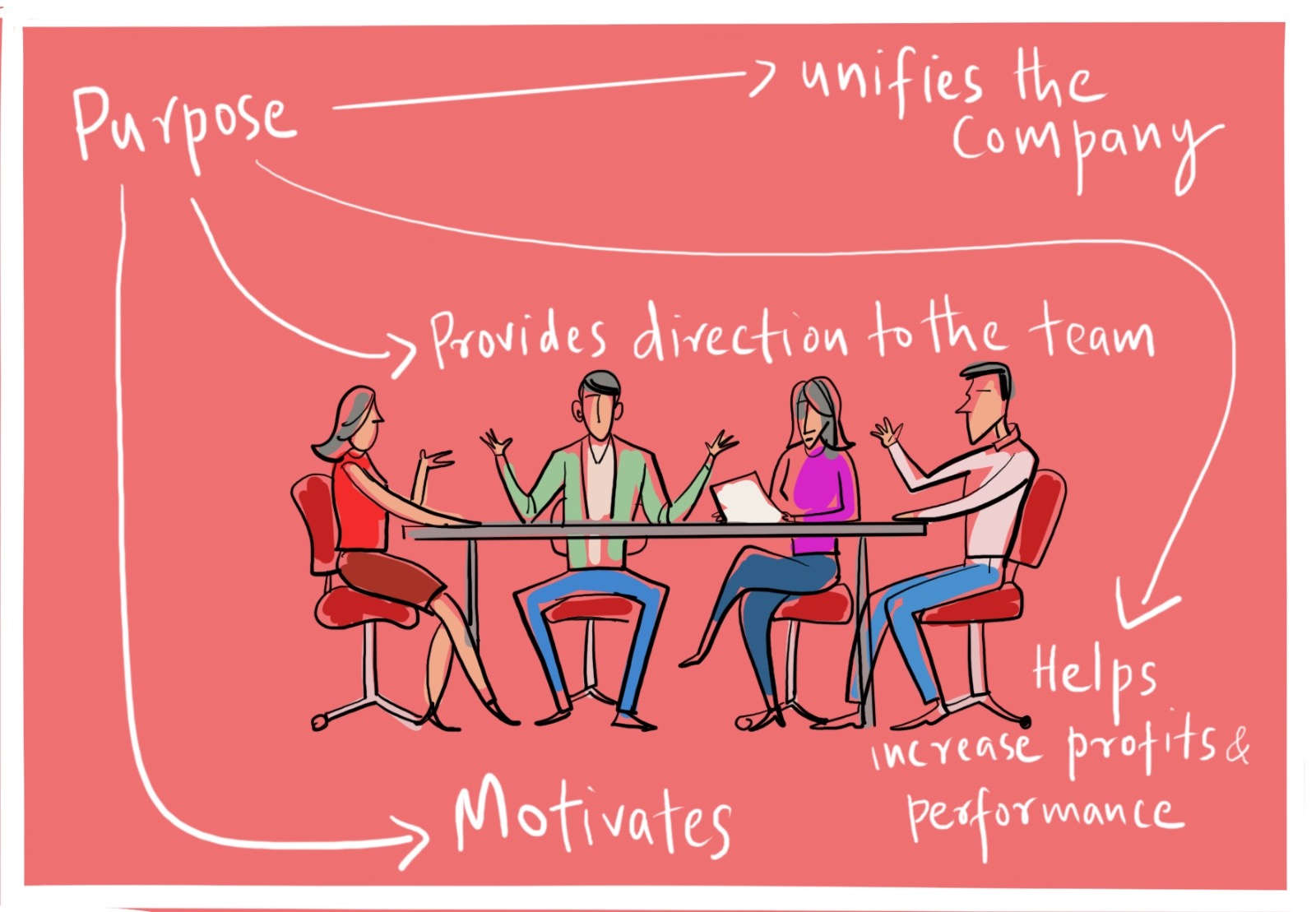We have a vision statement; do we still need a purpose statement a business leader asked? Do companies have vision, mission and purpose statement was her next query. She was concerned that employees would get confused. The answer to these questions rests in the specific need of the business at that point in time. Each of these anchors like vision, mission, purpose, fulfils a particular need. The best way to answer the business leader’s question is to try and understand what each of these terms signifies and helps an organisation achieve. So, let us dive in to explore each of them.
Purpose:
The purpose statement defines why an organisation exists. Purpose makes clear the impact the organisation seeks to have on society and its stakeholders.
“Organisational purpose is the motivating force moving, guiding, and delivering the organisation to a perceived goal. It is the driving force, the fuel, the bond, the intangible link that pulls the organisation together to achieve success”
– Reyes and Kleiner, 1990, p. 51
When done correctly, the purpose statement guides and helps define all the other aspects of an organisation. Like its vision, mission, values, goals, and decisions. It even governs employee behaviours.
So, what is vision?
A vision is where the organisation sees itself in the future. The vision statement defines where the organisation aims to be in the future.
For example: Intel’s purpose statement is: ” We create world-changing technology that improves the life of every person on the planet”.
Its vision statement is “We are on a journey to be the trusted performance leader that unleashes the potential of data.”
Mission statement:
A mission statement states ‘How’ an organisation will work towards achieving its vision and purpose. A mission statement is more of an action statement. It adds another level of detail, which provides teams with more clarity to action.
Operationally, the difference can be seen in Tesla whose purpose is “To accelerate the world’s transition to sustainable energy.” Its mission is “To create the safest, most reliable and compelling electric vehicles and energy products.”
Or even look at the distinction between the above stated purpose and vision of Intel, as compared to its mission statement. The mission statement clearly calls out how Intel hopes to achieve its vision and purpose. Intel’s mission statement is : “We engineer solutions for our customers’ greatest challenges with reliable, cloud to edge computing, inspired by Moore’s Law.”
Purpose and CSR?
On a lighter note, maybe because purpose has different connotations with ESG, life and impact, purpose is often considered as a stand-in for the charitable work or corporate social responsibility (CSR) efforts a company undertakes.
Take Google for instance – its purpose is “To organize the world’s information and make it universally accessible and useful.”. As part of being a responsible corporate entity, it undertakes many CSR activities. Like providing economically backward and/or underprivileged educators and students free access to their products. That remains their CSR efforts and not its purpose.
So what should the business leader do?
Going back to the question the business leader asked us, what should a business leader do in this case? As business leaders defining these anchors of purpose, vision and mission are important. But even more important is to help your team live these anchor statements on a daily basis. The benefits these anchors provide only accrue when these are experienced on a regular basis , in business decisions, in processes and ways of working. Rather than the label business leaders should focus energies on bringing them alive on the job. Once individuals are able to connect the work they do with the impact they create and the journey they are undertaking, commitment and disproportionate efforts will ensue almost seamlessly!


September 5, 2023, 10:29 pm
Very interesting! The essence is what creates energy in the system and what people align to. It is about what meaning the organisation assigns to any of the statements and how people relate to it….how they envision the future state.